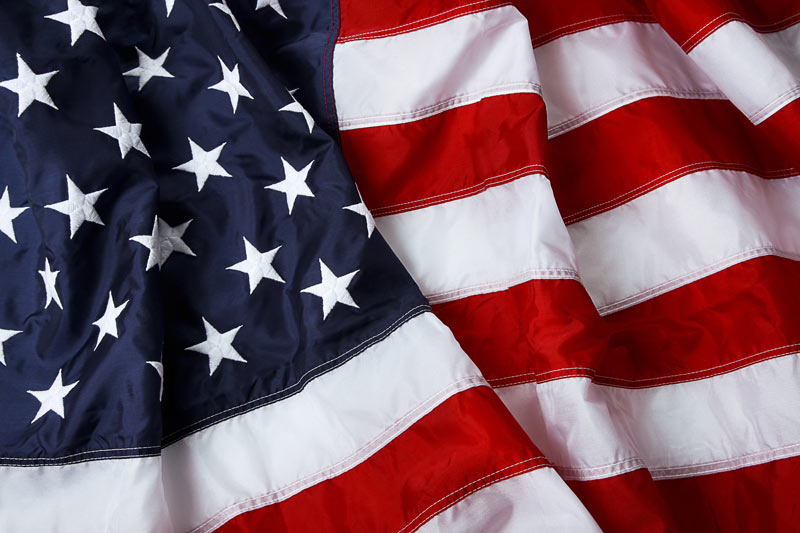No products in the cart.

The United States of America is nothing if not patriotic.
The summer season boasts numerous holidays celebrating America, its veterans, and, on June 14, its flag.
While Flag Day isn’t a day where people typically host barbecues or head to the beach to celebrate, it is observed nationwide.
Read on to learn five facts on the history of Flag Day, helping you recognize the significance of this important day for saluting our stars and stripes.
1) The Flag Resolution of 1777 Inspired Flag Day
June 14, 1777, is the day that the Continental Congress passed the Flag Resolution.
The Flag Resolution put into words the design of the American flag. The resolution stated that “the flag of the United States be thirteen alternate stripes red and white” and that “the Union be thirteen stars, white in a blue field, representing a new Constellation.”
This version of the flag represented the 13 colonies of the Union at the time. A number that would later grow to represent the 50 United States of America.
It is believed but not confirmed that Betsy Ross, an official flag maker for the Pennsylvania Navy, sewed the first flag.
2) Flag Day Didn’t Take Off Immediately
The passing of the Flag Resolution didn’t prompt people to start celebrating Flag Day annually.
Instead, it took a number of loyal patriots to start the trend of celebrating Flag Day. One of these patriots was BJ Cigrand, a school teacher from Wisconsin, who celebrated Flag Day with his students.
Another patriot proponent of Flag Day was George Balch from New York who celebrated it with his students in 1889.
3) Flag Days Started in Schools
Patriotism is one of the American values that adults wanted to instill in school children. In order to do this, Flag Day was encouraged in the American education system.
The State Board of Education in New York recognized Flag Day in 1891. Two years later, the Philadelphia school board started having their children celebrate Flag Day.
Each child was given a small flag and patriotic songs were sung of America’s beauty and power.
4) Flag Day Becomes Official
President Wilson issued a proclamation in 1916 officially establishing June 14 as Flag Day.
While Flag Day was celebrated for decades by the American public, it wasn’t until 1949 that President Truman signed an act making it a nationwide observance. However, it is not an official federal holiday.
Flag Day falls within National Flag Week, an occasion to reflect on our nation’s freedom.
The United States Army celebrates its birthday on June 14 as well.
5) The President’s Annual Proclamation
Flag Day is the celebration of the birth of the American flag, a flag representing freedom and opportunity in our nation.
Each year, the president of the United States issues a proclamation calling on government officials to display the flag on all government buildings on Flag Day
Furthermore, the president’s proclamation encourages U.S. residents to observe Flag Day as the anniversary of the flag’s adoption on June 14, 1777, as the official flag of the United States.
The History of Flag Day
The history of Flag Day is important to the history of the United States itself.
Many honor this day by displaying the American flag at homes and public buildings. Even if your city doesn’t have an annual Flag Day celebration, you can still celebrate with your family, friends or your neighborhood.
Need a flag for Flag Day for your home or business? Check out our website and contact us here.
Eagle Flag is your one-stop shop for all things flag. Serving customers for more than 10 years, we’re known for our affordable, heavyweight flags and our attention to detail. We’re proud to offer a variety of flags, poles and hardware, bunting, and other items to help you put your pride on display! All of our flags are Made in the U.S.A.
